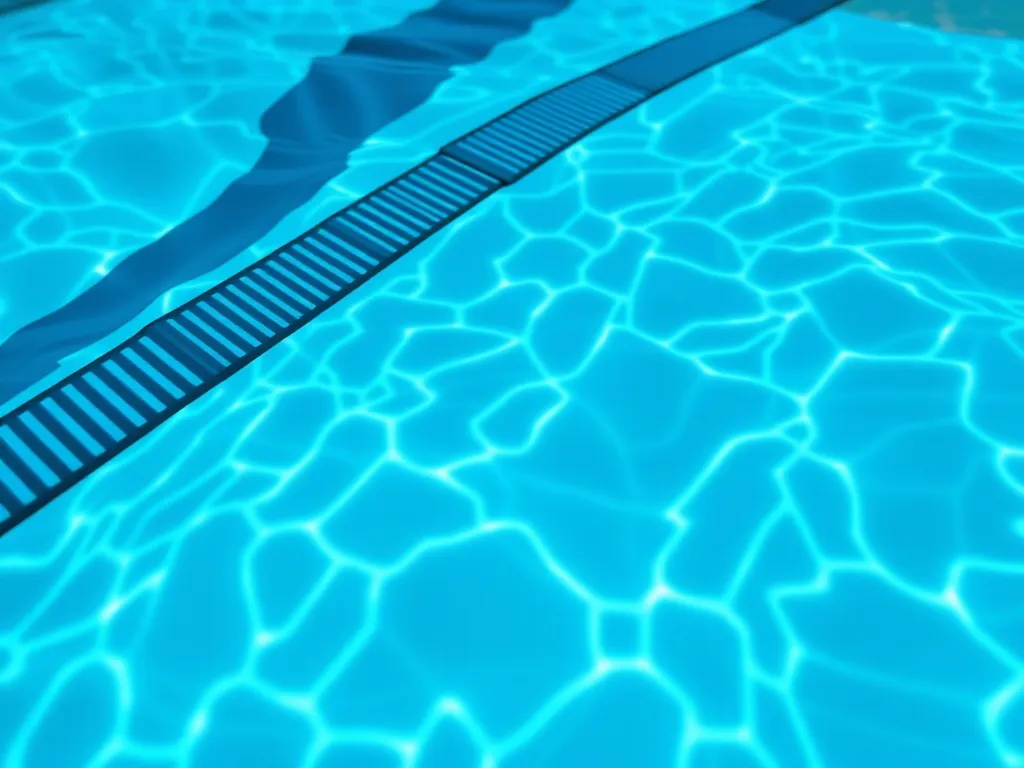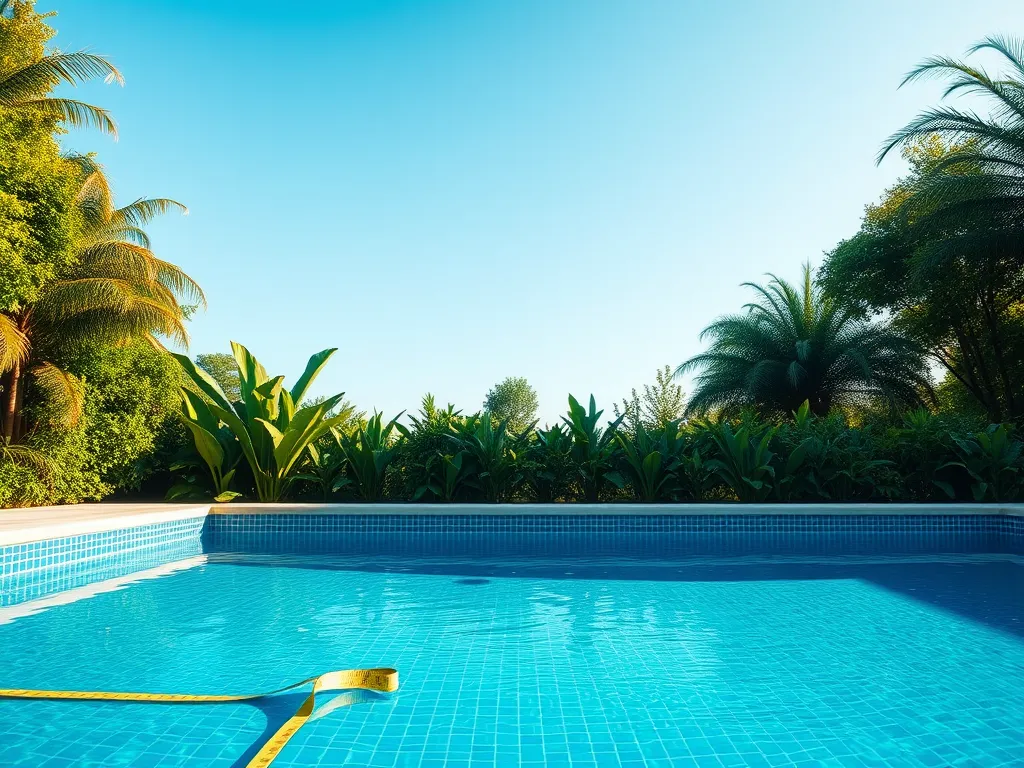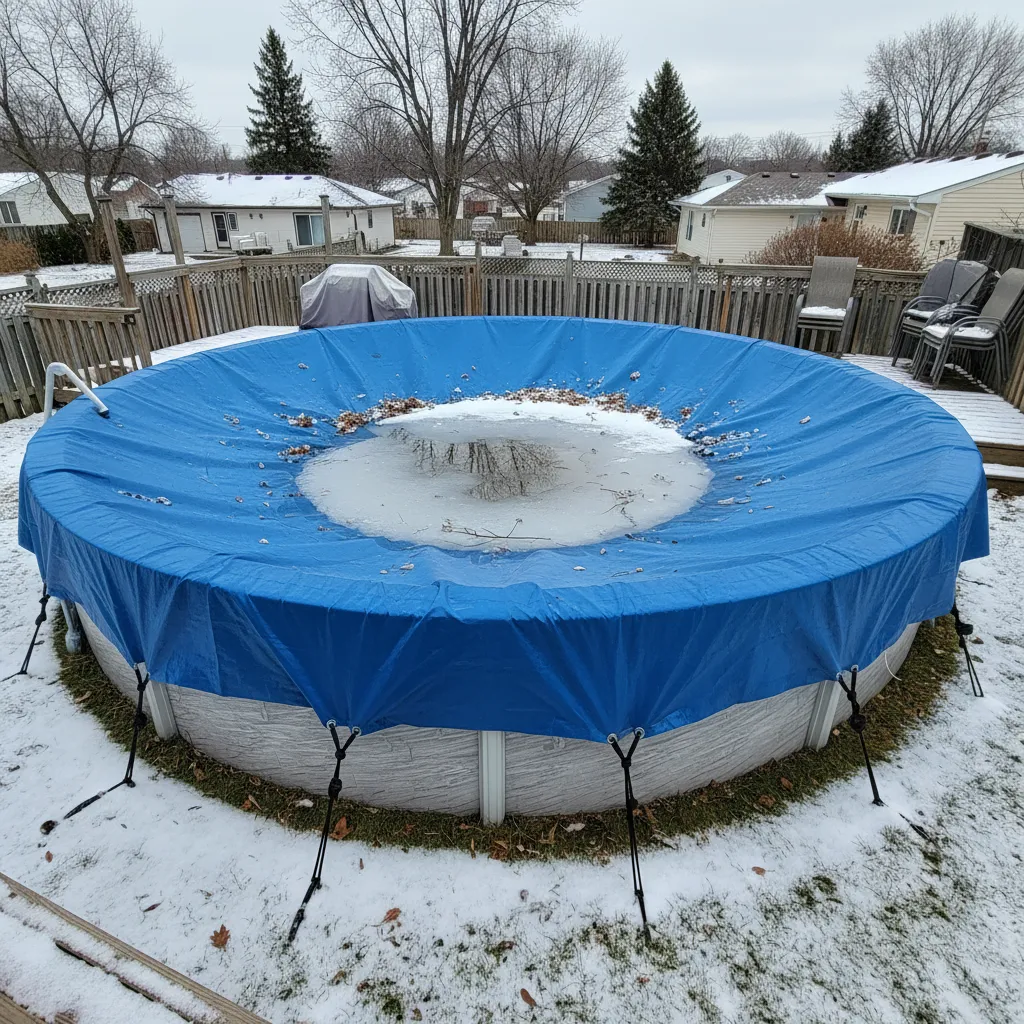Pool Cover Size Calculator
Published on: April 17, 2025 | Last Updated: April 13, 2025
Written By: Lila Fairholme
Need a pool cover but don’t know what size to get? Our calculator helps you find the right fit. Measure your pool, enter the numbers, and get the perfect cover size in seconds. Protect your pool from leaves, dirt, and heat loss with a cover that fits just right. No math skills needed – we’ll do the work for you!
Calculate Your Pool Cover Size
How to Use This Calculator
- Select your pool shape from the dropdown
- Choose feet or meters
- Enter your pool measurements
- Click “Calculate Cover Size”
Note: Add 10% to your final size for safety. Always double-check measurements before ordering.
Crucial Winterizing Products
"The all-in-one solution for a guaranteed clear spring opening."
All-in-One Closing Chemical Kit
Winter demand is high - check stock
"The 'set & forget' option. This is the easiest winterizing I've ever done."
Simple 3-in-1 Winterizing Balls
Winter demand is high - check stock
"Invest once to protect your liner and prevent a swamp in the spring."
Heavy-Duty Winter Pool Cover
Winter demand is high - check stock
Factors Influencing Pool Cover Size Requirements
Accurate sizing for pool covers depends on multiple variables. Ignoring even one element risks improper fit, reduced durability, or compromised safety. Let’s break down the critical factors. The size of the pool plays a key role in determining the right cover. There are standard pool sizes that help guide this process, ensuring proper coverage and protection.
Pool Shape and Geometric Complexity
Rectangular pools are straightforward. Freeform designs with curves, angles, or irregular edges demand precise measurements. Covers for kidney-shaped pools require 10-15% more material than standard rectangles. Measurements must account for radius points and asymmetrical features. Laser-guided tools or pool cover measurement apps help map non-linear edges. Proper measurement is key for ensuring you have the right cover. Pool cover equipment can help protect your investment and keep your pool clean.
Water Surface Area Vs. Total Deck Space
Covers are sized to the water’s surface, not the surrounding deck. A 16’x32’ pool with a 2’ raised bond beam needs a 16’x32’ cover, not 18’x34’. Overlap requirements vary: safety covers need 18-24 inches beyond the coping, while solar covers float directly on water. Use a pool cover area calculator to separate deck dimensions from actual water surface data. Choosing the right size pool for your needs is important for enjoying outdoor activities. A properly sized pool can maximize fun while minimizing maintenance costs.
| Cover Type | Overlap Needed | Material Stretch Factor |
|---|---|---|
| Safety Covers | 18-24 inches | 2-3% (mesh) |
| Solar Covers | 0 inches | 5-8% (polyethylene) |
| Winter Covers | 12-18 inches | 4-6% (vinyl) |
Anchoring Systems and Hardware Clearance
Underground tracks, recessed anchors, or spring-loaded straps affect sizing. Automatic covers require exact track-to-track measurements. For example, a 14’x28’ auto cover needs tracks spaced precisely 14’ apart. Grommet spacing on manual covers should align with anchor points every 4-5 feet. Misalignment causes uneven tension, accelerating wear.
Environmental Loads and Material Tolerance
Snow loads, wind uplift, and debris weight dictate material strength. A 20’x40’ mesh cover in snowy regions needs a minimum tensile strength of 3,500 lbs. Hydrostatic pressure ratings above 12 PSI prevent sagging. Always factor in a 5% stretch allowance for vinyl covers in climates with temperature swings exceeding 30°F.
Pool Cover Types and Their Sizing Nuances
Not all covers fit the same. Material properties, attachment methods, and performance goals alter sizing protocols.
Safety Covers: ASTM Standards and Load Distribution
ASTM F1346-91 requires safety covers to support 485 lbs per 5 square feet. A 16’x32’ cover must have 28-32 anchor points. Straps spaced wider than 5 feet risk central sagging. For concrete decks, brass anchors are drilled 6” deep; for pavers, use toggle bolts with 3” embedment.
Solar Covers: Floatation and UV Degradation
Bubble-style solar covers shrink 2-3% within the first 30 days. Size up by 6 inches on all sides to compensate. A 12’x24’ pool needs a 12’6”x24’6” cover. Thicker 16-mil materials last 3 seasons but lose 12% opacity yearly, reducing heat retention by 15% annually. Choosing the right cover size is essential for effective heat retention. A properly sized cover ensures maximum coverage and efficiency in keeping your pool warm.
Automatic Covers: Track Alignment and Motor Compatibility
Track-guided systems tolerate <0.5” deviation. Measure from the inside edge of each track. Motors have torque limits: a 1.5 HP motor handles covers up to 650 sq ft. Larger pools need 2-3 HP motors. Incorrect sizing strains gears, leading to $400-$600 in repairs. [flexible_link url="https://mypoolcalc.com/fix-pool-liner-track" type="permanent"]Keeping the track in good condition[/flexible_link] is essential for proper function. Regular maintenance can prevent costly fixes to your pool liner track.
Also See: Pool Electricity Cost Calculator: Estimate Your Costs

Cost Implications Of Pool Cover Dimensions
Size directly impacts material costs, labor, and longevity. Let’s analyze price per square foot across categories.
Material Costs by Cover Type
- Solid Vinyl: $0.85-$1.20 per sq ft (12-14 mil thickness)
- Mesh Safety: $1.50-$2.75 per sq ft (1,800D-2,200D denier)
- Automatic: $25-$35 per sq ft (includes tracks and motor)
- Solar Bubble: $0.30-$0.60 per sq ft (8-16 mil grades)
Labor and Customization Fees
Standard sizes (12’x24’, 16’x32’) cost $150-$300 to install. Custom cuts add $2.50-$4.00 per sq ft. Irregular shapes with radius corners incur a 20% surcharge. For example, a 15’x30’ kidney-shaped cover with two radii costs $1,800 (materials) + $540 (labor) = $2,340 total. As you consider building a pool, it’s important to keep in mind the overall costs involved. In Arizona, factors like local regulations and climate can also influence the expenses for constructing a pool.
Common Measurement Errors and Fixes
Avoid these pitfalls to prevent costly reorders or water contamination.
Misaligned Center Points
Measuring from the deck edge instead of the waterline causes undersizing. Always start at the coping’s inner lip. For raised pools, subtract 6” per side for cantilevered edges. Accurate measurements are key for a proper fit. This ensures your new pool liner will fit securely and last longer.
Ignoring Seasonal Expansion
Vinyl covers expand in heat. A 20’x40’ cover ordered in winter may tighten excessively in summer, tearing at stress points. Add 1.5% to total length if temperatures exceed 90°F regularly. This expansion and tightening can lead to other issues, such as pool cover sagging. Pool cover sagging can create pools of water that add weight and strain on the cover, potentially causing more damage over time.
Overlooking Step Profiles
Integrated steps or sun ledges need separate cutouts. Measure step width and depth, then add 8” for strap overlap. For a 6’x3’ step, specify a 6’8”x3’8” cutout.
FAQs: Pool Cover Sizing Challenges
Why Does My 18’ Round Cover Leave Gaps?
Round pools require diameter measurements across the center. If your pool is 17’11”, rounding up to 18’ causes a 1” gap. Use a pool cover dimension calculator with 0.25’ increments. Accurately measuring the diameter is crucial for proper pool maintenance. This ensures that you choose the right cover size and avoid unnecessary issues.
Can I Resize a Cover Myself?
Trimming mesh or vinyl covers voids warranties. Solar covers can be cut with a utility knife but lose 8% efficiency at seams. Professional resizing costs $75-$150.
How Often Should I Remeasure My Pool?
Check dimensions every 3-5 years. Ground shifting alters concrete decks by up to 1.5”. For vinyl liners, measure after replacement since new liners can change water surface area by 2-3%. Regular maintenance also impacts the lifespan of your pool’s liner. Taking care of your pool can help extend its overall durability.

Advanced Tools for Precision Sizing
Laser Distance Measurers
Devices like Leica DISTO D2 provide ±1/16” accuracy up to 330 feet. Ideal for large commercial pools or irregular shapes. Pair with a pool cover measurement app to sync data with manufacturers. When planning your pool area, it’s crucial to consider the distance from your house. Maintaining the right distance can enhance safety and comfort while enjoying your above ground pool.
3D Pool Scanning Apps
Apps like Pool Studio create digital models using smartphone cameras. Input measurements to generate cover specs with 99% accuracy. Export files to CAD software for custom orders. These features can help in planning a beautiful design pool. A well-designed pool enhances outdoor spaces and offers a perfect spot for relaxation.
Reel-based Measuring Systems
Stanley 25’x100’ reel tapes handle long spans without sag. Nylon coatings resist water damage. Use with a pool cover size ruler for straight edges.
Regional Considerations for Cover Sizing
High-wind Zones (Texas, Florida)
Add 10% more overlap and choose 2,200D mesh. Secure with 48 anchors instead of 32 for a 16’x32’ pool. Wind speeds above 50 mph require 4” stainless steel screws instead of standard 3”.
Snowbelt Areas (Minnesota, Colorado)
Use reinforced vinyl with 18-mil thickness. Size covers to handle 40 lbs/sq ft snow loads. A 14’x28’ cover needs 28 anchors placed 3’ apart.
When to Consult a Professional
DIY methods work for standard pools. Seek experts if:
- Your pool has vanishing edges or infinity designs
- Deck materials require non-penetrating anchors
- Local codes mandate engineered covers for pools >500 sq ft
Pro services cost $200-$500 but prevent compliance issues. They use inground pool cover measuring calculators calibrated to ASTM standards.
Maintenance Tips for Long-term Fit
- Clean covers monthly with 300 PSI pressure washers to prevent material shrinkage from debris buildup
- Apply 303 Aerospace Protectant every 6 months to reduce UV-induced brittleness
- Inspect anchor points annually; replace corroded springs or straps
For personalized sizing strategies, explore resources at My Pool Calculator. Cross-reference your measurements with our pool cover sizing calculator for validation.





